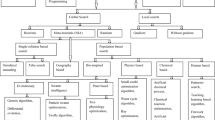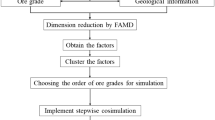Abstract
An innovative predictive equation characterizing watermain failure timing developed from datasets of historical failures in Greater Toronto Area (GTA), Ontario, Canada is described. Gene expression programming (GEP) is used to develop empirical relations between the time to failure and control variables including protection methods for three types of pipes, Cast Iron, Ductile Iron, and Asbestos Cement. The developed GEP model has a correlation coefficient of 0.68, and with the advantage for predicting not only the time to first break, but also subsequent breaks. The prediction uncertainties of the developed GEP were 38 % of the median value for time to next failure. A parametric analysis is performed for further verification of the developed GEP model showing the relation is simple, yet effectively forecasts watermain timing to first failure and subsequent failures. Simulated failure scenarios indicate a return to high failure rates if cement mortar lining and cathodic protection are not extended to all candidate pipes in the distribution system.




Similar content being viewed by others
References
Al-Aghbar A (2005) Automated selected trenchless technology for the rehabilitation of watermains. Master of applied science thesis, Department of Building, Civil, and Environmental Engineering, Concordia University, Canada
Al-Barqawi M, Zayed T (2006) Condition rating model for underground infrastructure sustainable watermains. J Perform Constr Facil ASCE 20:126–135
Alanne G (2008) Developing a model to predict watermain failures. PhD Dissertation, submitted to University of Southern Queensland
Asnaashari A, McBean E, Gharabaghi B, Tutt A (2013) Forecasting watermain failure using artificial neural network modeling. Can Water Res J 38:24–33
Aydin N, Mays L, Schmitt T (2014) Technical and environmental sustainability assessment of water distribution systems. Water Resour Manag 28:4699–4713
Aydogdu M, Firat M (2015) Estimation of failure rate in water distribution network using fuzzy clustering and LS-SVM methods. Water Resour Manag 29:1575–1590
Azamathulla H, Ghani A, Zakaria N, Guven A (2010) Genetic programming to predict bridge pier scour. J Hydraul Eng ASCE 136:165–169
Beale D, Marlow D, Cook S (2013) Estimating the cost and carbon impact of a long term watermain rehabilitation strategy. Water Resour Manag 27:3899–3910
Clark RM, Stafford CL, Goodrich JA (1982) Water distribution systems: a spatial and cost evaluation. J Water Resour Plan Manag 108:243–256
City of Toronto (2012) Watermains and watermain breaks. Water supply: fact sheets, 〈http://www.toronto.ca/water/supply/system/watermains.htm〉 Jun. 10, 2012
Eisenbeis P (1994) Modélisation statistique de la prévision des défaillances sur les conduites d’eau potable. Thése de doctorat, Université Louis Pasteur, Strasbourg
Eisenbeis P, Røstum J, Le Gat Y (1999) Statistical models for assessing the technical state of water networks - some european experiences. Proceedings of annual conference of AWWA, Chicago, Illinois, 20–24
El-Hakeem M, Sattar AM (2015) An entrainment model for non-uniform sediment. Earth Surf Process Landf 40(9):1216–1226
Elbakry M, Radi A (2007) Genetic programming approach for flow of steady state fluid between two eccentric spheres. Appl Rheol 17:68–72
Ferreira C (2001) Gene expression programming: a new adaptive algorithm for solving problems. Complex Syst 13:87–129
Folkman S (2012) Watermain break rates in the USA and Canada: a comprehensive study, report, Utah State University buried structures laboratory, April 2012
Goulter IC, Kazemi A (1998) Spatial and temporal groupings of watermain pipe breakage in Winnipeg. Can J Civ Eng 15:91–97
Harvey R, McBean E, Gharabaghi B (2014) Predicting the timing of watermain failure using artificial neural networks. J Water Resour Plan Manag 140:425–434
Kettler AJ, Goulter IC (1985) An analysis of pipe breakage in urban water distribution networks. Can J Civ Eng 12:286–293
Kleiner Y, McDonald S, Rajani B, Kleiner Y, Mcdonald S (2003) Cathodic protection of watermains in Ottawa: analysis and planning. Corrosion control for enhanced reliability and safety, 1–14
Kleiner Y, Sadiq R, Rajani B (2006) Modelling the deterioration of buried infrastructure as a fuzzy Markov process. J Water Supply Res Technol: AQUA 55:67–80
Kurkova V (2001) Artificial neural networks and genetic algorithms. Proceedings of ICANNGA International conference in Pargue, Czech Republic
Lei J (1997) Statistical approach for describing lifetimes of watermains - case trondheim municpality. STF22 A97320, SINTEF, Trondheim
Lin Y, Ping C, Yang M, Su T (2015) Multiobjective optimal design of sewerage rehabilitation by using the nondominated sorting genetic algorithm-II. Water Resour Manag 29:1–17
Malm A, Moberg F, Rosen L, Pettersson T (2015) Cost-benefit analysis and uncertainty analysis of water loss reduction measures: case study of the Gothenburg drinking water distribution system. Water Resour Manag 29:5541–5468
Makar JM, Desnoyers R, McDonald SE (2000) Failure modes and mechanisms in gray cast iron pipe, viewed 3 March 2008, NCRC-IRC recent publications
Nafi A, Tcheng J, Beau P (2015) Comprehensive methodology for overall performance assessment of water utilities. Water Resour Manag 29:5429–5450
Najafzadeh M, Sattar AM (2015) Neuro-fuzzy GMDH approach to predict longitudinal dispersion in water networks. Water Resour Manag 29:2205–2219
Nishiyama M, Filion Y (2013) Review of statistical watermain break prediction models. Can J Civ Eng 40:972–979
O’Day DK, Fox CM, Huguet GM (1980) Aging urban water systems: a computerized case study. Public Work 111:61–64
Pan Y, Stevenson RJ, Hill BH, Herlihy AT, Collins GB (1996) Using diatoms as indicators of ecological conditions in lotic systems: a regional assessment. J N Am Benthol Soc 15:481–495
Park S, Loganathan G (2002) Methodology for economically optimal replacement of pipes in water distribution systems: 1. theory. KSCE J Civ Eng 6:539–543
Rajani B, Kleiner Y, Sink JE (2012) Exploration of the relationship between watermain breaks and temperature covariates. Urban Water 9:67–84
Rostum J (2000) Statistical modeling of pipe failures in water networks. master of science dissertation, Norwegian University of Science and Technology, Trondheim
Sundahl AC (1997) Geographical analysis of watermain breaks in the city of Malmö, Sweden. J Water Supply Res Technol: AQUA 46:40–47
Sattar AM (2014a) Gene Expression models for the prediction of longitudinal dispersion coefficients in transitional and turbulent pipe flow. J Pipeline Syst Eng Pract, ASCE 5:04013011
Sattar AM (2014b) Gene expression models for prediction of Dam breach parameters. J Hydroinformat, IWA, in press
Todorovski L (2003) Using domain knowledge for automated modeling of dynamic systems with equation discovery. PhD dissertation submitted to faculty of computer and information science, University of Ljubljana, Ljubljana
Toronto Water (2011) 2012 recommended operating budget. City finances–budget 2012, 〈http://www1.toronto.ca/static_files/budget/2012/pdf/2012_tw_budget_pres.pdf〉 Jun. 20, 2012
Tropsha A, Gramatica P, Gombar VK (2003) The importance of being earnest: validation is the absolute essential for successful application and interpretation of QSPR models. QSAR Combi Sci 22:69–77
Tsitsifli S, Kanakoudis V, Bakouros I (2011) Pipe networks risk assessment based on survival analysis. Water Resour Manag 25:37291–3746
Verbeeck H, Samson R, Verdonck F, Raoul L (2006) Parameter sensitivity and uncertainty of the forest carbon flux model FOUG: a monte Carlo analysis. Tree Physiol 26:807–817
Vose D (1996) Quantitative risk analysis: a guide to monte Carlo simulation modeling. Wiley, New York
Walker H (1931) Studies in the history of the statistical method. Williams & Wilkins, Baltimore, pp 24–25
Wang Y, Moselhi O, Zayed T (2009) Study of the suitability of existing deterioration models for watermains. J Perform Constr Facil, ASCE 23:40–46
Wengström TR (1993b) Drinking water pipe breakage records: a tool for evaluating pipe and system reliability. Institutionen för vattenförsörjnings- och avloppsteknik, Chalmers tekniska högskola
Yamijala S (2007) Statistical estimation of water distribution system pipe break risk. Thesis submitted to Texas A&M University
Zhao Q, Rajiani B (2002) Construction and rehabilitation costs for buried pipe with a focus on trenchless technologies. Report IRC-RR-101, Institute for Research in Construction, National Research Council of Canada, Canada
Author information
Authors and Affiliations
Corresponding author
Rights and permissions
About this article
Cite this article
Sattar, A.M.A., Gharabaghi, B. & McBean, E.A. Prediction of Timing of Watermain Failure Using Gene Expression Models. Water Resour Manage 30, 1635–1651 (2016). https://doi.org/10.1007/s11269-016-1241-x
Received:
Accepted:
Published:
Issue Date:
DOI: https://doi.org/10.1007/s11269-016-1241-x




